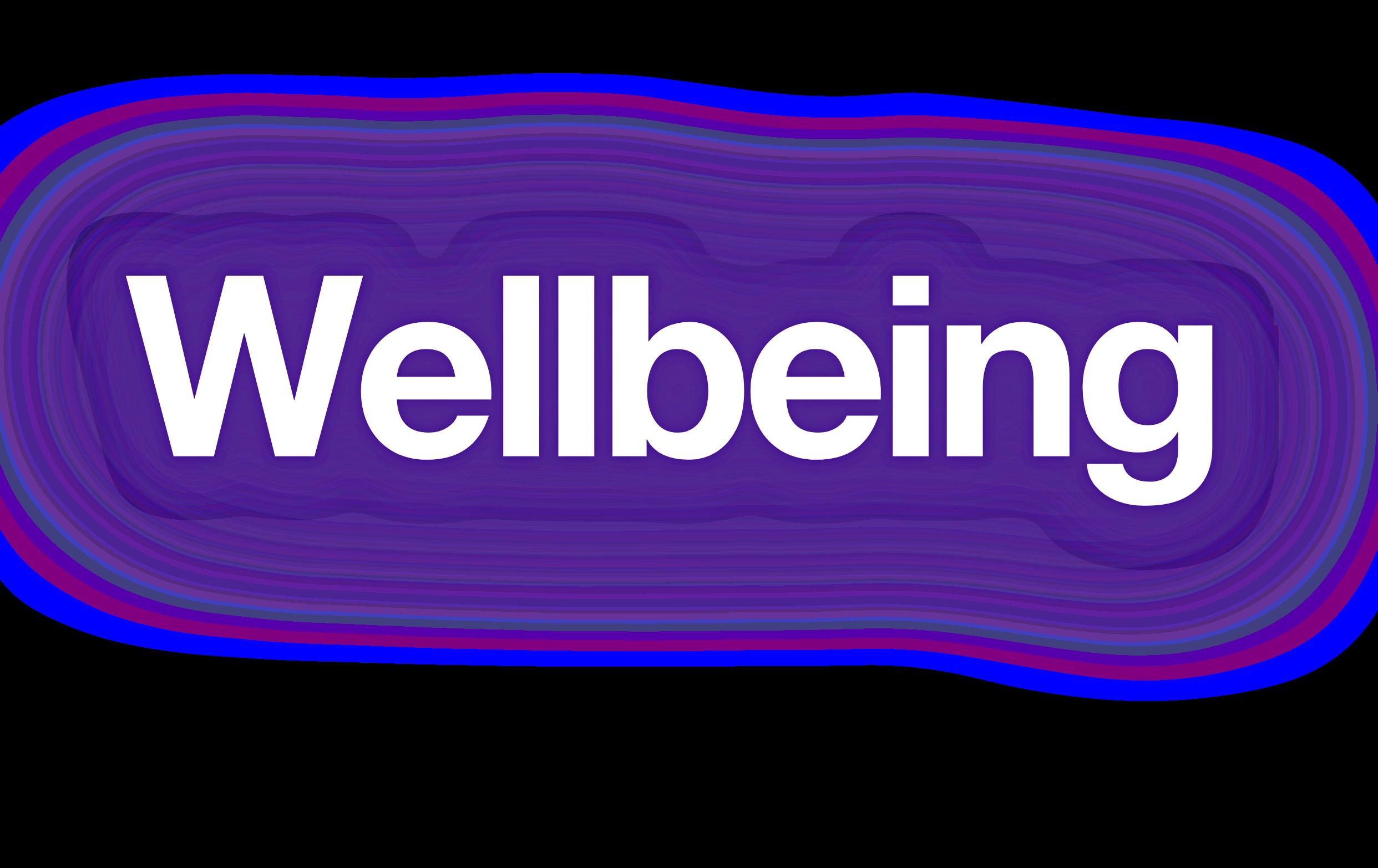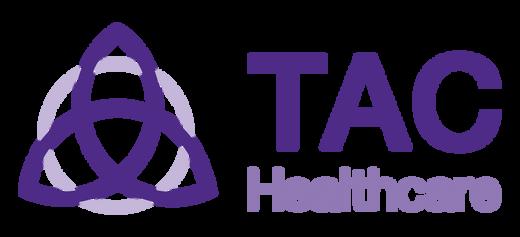

















As we embrace the changing season, April is the perfect time to focus on both self-care and giving back, creating a positive impact on our wellbeing and the world around us.
This month, we’re exploring ways to understand and manage anxiety for a calmer mind, highlighting the importance of food donations to support those in need, and inviting you to take part in a hydration challenge to boost your energy and focus levels.
With World Health Day on 7th April, we’ll also be sharing practical tips to help you prioritise your health. Additionally, we'll delve into the concept of "Fake It Till You Make It", exploring how adopting this strategy can support you in becoming your best self.
Let’s make April a month of positive change, both inside and out!

“When the student is ready the teacher will appear.“
Lao Tzu

Every year on the 7th of April, the world comes together to celebrate World Health Day, a global health awareness day under the sponsorship of the World Health Organisation (WHO).
The theme for World Health Day 2025 is ‘Healthy beginnings, hopeful futures’. The health of mothers and babies is the foundation of healthy families and communities, helping ensure hopeful futures for us all.
Physical health is often the first thing that comes to mind when we think about health It includes maintaining a healthy diet, engaging in regular physical activity, getting adequate sleep, and avoiding harmful behaviours such as smoking and excessive alcohol consumption. World Health Day is an opportunity to explore making small, sustainable changes to our daily routines that can have a significant impact on our physical health. Whether it’s taking a brisk walk during lunch breaks, choosing healthier snacks, or ensuring we get enough rest, every little bit helps
Mental health is an integral part of our overall wellbeing, yet it is often overlooked or stigmatised. It’s crucial to recognise that mental health conditions are common and treatable. Encouraging open conversations about mental health, seeking professional help when needed, and supporting loved ones can make a world of difference Improving mental health involves a variety of activities that can help enhance emotional wellbeing, reduce stress, and build resilience Here are some specific activities you can try:
Mindfulness and Meditation
Practising mindfulness involves paying attention to the present moment without judgement. Meditation, a deeper form of mindfulness, involves focused attention and mental stillness Both practices can reduce stress, improve concentration, and enhance emotional regulation

Writing down things you are thankful for can enhance your mood and emotional wellbeing Keeping a gratitude journal helps shift focus from negative thoughts to positive ones, fostering a more optimistic outlook on life.
Deep breathing exercises can help calm the mind and reduce stress. Techniques such as diaphragmatic breathing or the 4-7-8 method can be particularly effective in managing anxiety and promoting relaxation
Cognitive Reframing
This involves changing the way you think about a situation to alter your emotional response By identifying and challenging negative thought patterns, you can develop a more positive and balanced perspective
Engaging in Hobbies
Pursuing hobbies and interests can provide a sense of accomplishment and joy Whether it’s painting, gardening, reading, or playing a musical instrument, engaging in activities you enjoy can boost your mood and reduce stress
Spending Time in Nature
Connecting with nature can have a calming effect on the mind Activities like hiking, gardening, or simply walking in a park can reduce stress and improve overall wellbeing
Social health is about building and maintaining meaningful relationships Supportive connections with family, friends, and colleagues enhance wellbeing and resilience This World Health Day, take time to reconnect, join a group, or volunteer - small actions that foster belonging and purpose.
Looking for a simple yet meaningful way to help those in need?
Donating non-perishable food items to your local food bank is a fantastic way to support individuals and families struggling to make ends meet A small act of kindness can go a long way in ensuring that everyone has access to nutritious food
So, gather your colleagues, collect food donations, and make a real difference in your community!
Here’s How to Get Started:
Collect Non-Perishable Items
Encourage team members to donate canned goods, rice, pasta, and other shelf-stable foods.
Choose a central location in your workplace where employees can drop off their donations
Spread the Word
Use emails, posters, or team meetings to raise awareness and inspire participation

Choose a Local Food Bank
Research and select a food bank that serves your community
Deliver the Donations
Arrange for a group drop-off or coordinate with the food bank for a pickup
It's a simple yet meaningful way to make a difference in your community and ensure that everyone has access to nutritious food.
Anxiety is a common issue that many people face, often manifesting as persistent worry, nervousness, or unease. While it’s a natural response to stress, chronic anxiety can significantly impact your quality of life.
There are effective strategies to manage and reduce anxiety, helping you regain control and improve your overall wellbeing.
Anxiety can be triggered by various factors, including work pressures, personal relationships, or health concerns It often involves a cycle of negative thoughts and physical symptoms such as increased heart rate, sweating, and difficulty concentrating Recognising these signs is the first step towards managing anxiety
Mindfulness and Meditation: Practising mindfulness can help you stay grounded in the present moment, reducing the tendency to ruminate on past events or future worries Simple mindfulness exercises, such as focusing on your breath or engaging in a body scan, can be highly effective for in-themoment relief Apps like Headspace and Calm offer guided meditations that are easy to follow
Physical Activity: Regular exercise is a powerful tool for combating anxiety Physical activity releases endorphins, which are natural mood boosters Whether it’s a brisk walk, a yoga session at home, or a workout at the gym, incorporating movement into your daily routine can help reduce anxiety levels
Healthy Diet: What you eat can influence your mood and anxiety levels A balanced diet rich in fruits, vegetables, whole grains, and lean proteins can support mental health Avoid excessive caffeine and sugar, as they can exacerbate anxiety symptoms

Adequate Sleep: Poor sleep can heighten anxiety, creating a vicious cycle Aim for 7-9 hours of quality sleep each night Establish a calming bedtime routine, such as reading a book or taking a warm bath, to signal to your body that it’s time to wind down Sleep hygiene can help train your mind to prepare for sleep on a regular pattern
Deep Breathing Exercises: Deep breathing techniques can help calm your nervous system Try the 4-7-8 breathing method: inhale for 4 seconds, hold your breath for 7 seconds, and exhale slowly for 8 seconds Repeat this cycle a few times to help reduce immediate anxiety
Connect with Others: Social support is crucial for managing anxiety Talking to friends, family, or a mental health professional can provide relief and perspective. Don’t hesitate to reach out for support when you need it.
Limit Screen Time: Excessive use of screens, especially before bed, can increase anxiety. Set boundaries for screen time and take regular breaks to rest your eyes and mind
Managing anxiety is a journey that requires patience and persistence By incorporating these practical tips into your daily routine, you can effectively beat anxiety and enhance your overall wellbeing Remember, it’s important to seek professional help if anxiety becomes overwhelming Taking proactive steps towards managing anxiety can lead to a healthier, happier life
‘Fake
The concept of "fake it till you make it," often used casually today, has deep scientific roots in behavioural psychology It’s based on the principle that our actions can shape our thoughts and emotions, an idea explored by Victorian philosopher William James in 1884 James famously stated, "If you want a quality, act as if you already have it " His work delved into how our external behaviour influences our internal state, exploring how posture, physical actions, and behaviours can impact our mental and emotional wellbeing
This approach became known as the "As-if Principle," which suggests that by acting as if we feel a certain way, we can actually cultivate those feelings
If you're feeling down, acting like a happy person whether by walking energetically, smiling, or socialising - can gradually shift your mood toward happiness As positive actions build positive emotions, a reinforcing cycle begins, where attitudes and behaviours align in an upward spiral of positivity
For example:
Confidence in Public Speaking
If you want to be a confident public speaker but feel nervous, act as if you are already confident Stand tall, make eye contact, and speak clearly Over time, these behaviours can help reduce anxiety and build genuine confidence
Developing Patience
If you aspire to be more patient but often feel frustrated, act as if you are already patient. When faced with a situation that tests your patience, take deep breaths, smile, and respond calmly. Gradually, these actions can help you develop a more patient attitude.


If you want to be more sociable but feel shy, act as if you are already outgoing Start conversations, ask questions, and show interest in others These behaviours can help you become more comfortable in social settings and build genuine social skills
If you want to be more diligent at work but struggle with procrastination, act as if you are already a hard worker Set a schedule, prioritise tasks, and stay focused Over time, these actions can help you develop a stronger work ethic
Building Resilience
If you want to be more resilient but feel overwhelmed by challenges, act as if you are already resilient Face difficulties headon, maintain a positive attitude, and seek solutions Over time, these behaviours can help you build genuine resilience
By consistently acting “as if” you possess the qualities you aspire to have, you can gradually develop those traits and align your actions with your goals Is there a specific area you would like to focus on?
We can apply the "As-if Principle" when striving to become the kind of person we wish to be - whether that’s kind, patient, or thoughtful Even if your emotions don’t initially match those ideals, they are not set in stone. The key is not what you feel, but what you do. Emotions are neutral, but actions can be good or bad. By consistently acting as the person, you aspire to be, your thoughts and feelings will eventually follow suit, aligning your inner world with your ideals.
"If you want a quality, act as if you already have it."
W. James (Victorian Philosopher)
Hearing loss is a significant global health issue that affects millions of people and is set to rise dramatically By 2050, nearly 2 5 billion people worldwide will experience some degree of hearing loss, with more than 700 million requiring hearing rehabilitation In the UK alone, approximately 18 million people are affected, with over 50% of those over 50 and 80% over 70 experiencing some form of impairment
Hearing loss is often considered an "invisible disability," which can lead to social isolation and mental health challenges In the UK, 62% of individuals with hearing loss report feeling isolated, and 87% state that it impacts their daily lives
Additionally, untreated hearing loss has significant economic implications, costing the UK economy approximately £30 billion annually due to lost productivity The NHS also allocates over £1 billion each year to hearing loss services
Hearing loss can occur at any stage of life, from birth to old age, and can be either temporary or permanent Common causes include genetic factors, infections, exposure to loud noise, ageing, and medical conditions like otosclerosis Hearing impairment is categorised based on the severity and frequency of sounds a person can hear Prolonged exposure to sounds above 85 decibels (dB) can cause noise-induced hearing loss, with 120 dB being uncomfortable and 140 dB being the threshold of pain
Work-related hearing loss can be minimised through occupational safety programmes and protective equipment Additionally, limiting exposure to loud music and reducing the use of ototoxic medications can help prevent avoidable hearing damage.
For those experiencing hearing loss, rehabilitation plays a key role in maintaining independence and quality of life Interventions include:
Hearing Aids and Implants: Devices like cochlear implants and middle ear implants improve hearing function.
Speech and Language Therapy: Enhances communication skills and cognitive development. Sign Language and Assistive Technologies: Helps individuals adapt through alternative communication methods
Counseling and Support Groups: Provides emotional and psychological support for individuals and their families
Tinnitus, the perception of ringing or buzzing sounds without an external source, often accompanies hearing loss. It can be temporary or permanent and significantly impact wellbeing. Managing tinnitus involves relaxation techniques, cognitive behavioural therapy (CBT), sound therapy, and, in some cases, the use of hearing aids Avoiding complete silence, engaging in enjoyable activities, and stress management can help cope with tinnitus symptoms
If you experience hearing loss or tinnitus, consult a healthcare professional for assessment and guidance. Timely intervention and proper management can greatly improve communication abilities, social interactions, and overall quality of life By taking preventive measures and promoting awareness, we can collectively work towards reducing the burden of hearing loss worldwide





Improve your overall wellbeing by staying hydrated and building healthy hydration habits over the next 30 days
By staying hydrated, you can experience enhanced energy levels, better skin health, and effective weight management
Carry a water bottle: Keep a reusable water bottle with you throughout the day
Set reminders: Use your phone or watch to remind yourself to drink water regularly
Flavour your water: Add fruits, herbs, or a squeeze of lemon or lime for added taste
Eat water-rich foods: Fruits and vegetables like watermelon, cucumber, and celery have a high water content.
Listen to your body: Pay attention to your thirst signals and drink when you feel thirsty.
By committing to this challenge, you'll be taking a proactive step towards improving your overall health and wellbeing
Day 1: Calculate your daily water needs based on your weight (approx 0 5 to 1 ounce of water per pound of body weight)
Day 2: Start tracking your water intake using a journal or app Record how much water you drink each day
Day 3: Set a daily hydration goal (e g , 8 glasses of water or your calculated amount)
Day 4-7: Drink at least one glass of water first thing in the morning Continue tracking and hit your daily goal each day

Day 8: Carry a reusable water bottle wherever you go Aim to refill it at least twice a day
Day 9: Replace one sugary or caffeinated beverage with water or herbal tea
Day 10: Set hydration reminders on your phone or through an app to drink water every hour
Day 11: Drink a glass of water before each meal to support digestion and prevent overeating
Day 12-14: Continue to meet your daily hydration goal and notice how your energy levels and mood improve
Day 15: Incorporate hydrating foods into your diet, like watermelon, cucumbers, oranges, and lettuce
Day 16: Try an infused water recipe (add lemon, mint, cucumber, or berries to your water for extra flavour)
Day 17: Drink a glass of water after each cup of coffee or caffeinated drink to balance hydration
Day 18: Check for signs of dehydration, such as dry mouth, fatigue, or dark urine, and adjust your intake accordingly
Day 19-21: Continue adding hydrating foods and infused water into your routine to maintain variety
Day 22: Try a hydration challenge: drink a glass of water every two hours for a full day.
Day 23: Drink water before, during, and after exercise to stay hydrated while being active.
Day 24: Evaluate your hydration habits. Are you consistently meeting your daily goal? Identify any patterns or challenges
Day 25: Encourage a friend or colleague to join you in the hydration challenge for extra accountability
Day 26-28: Aim to maintain your progress by hitting your hydration target and using your healthy habits from the previous weeks
Day 29: Reflect on how staying hydrated has impacted your health, mood, and energy Take note of any positive changes
Day 30: Set a long-term hydration goal (e g , continue tracking water intake, reduce sugary beverages) and make a plan to sustain this habit beyond the challenge
Useful Resources
My Water App (Google Play)
My Water App (Apple Store)
NHS Hydration
Flavoured Water Recipes
Hydration Podcast

Throughout the month, reduce your intake of dehydrating drinks like alcohol and sugary sodas Replace them with water or herbal teas to enhance your hydration efforts.

One of the easiest ways to check how hydrated you are is to measure your urine colour against the chart to see if you are drinking enough.
To keep well hydrated you should be aiming to drink between 6-8 glasses of fluids per day.
You are well hydrated but make sure that you drink water regularly throughout the day
Drink an extra 1-2 glasses of water over the new few hours, you may not be drinking enough
It looks like you're not drinking enough Try to drink an extra 2-3 glasses of water over the next few hours
You are not drinking enough Dehydration is a risk factor for kidney stones and makes it much harder for your body to work as it should.
Fluid recommendations for adults: MEN: 2000ml WOMEN: 1600ml
Packed with health benefits and flavour, this salad features a variety of superfoods that provide essential nutrients, antioxidants, and healthy fats
For the Salad:
2 cups kale, chopped
2 cups spinach, chopped
1 cup cherry tomatoes, halved
1 cucumber, diced
1 bell pepper (any colour), diced
1 avocado, diced
1 cup blueberries (fresh or frozen, thawed)
1 cup chickpeas (cooked or canned, rinsed and drained)
¼ cup pumpkin seeds
¼ cup walnuts or almonds, chopped
1 cup cooked quinoa (or brown rice)
¼ cup fresh parsley or coriander, chopped
¼ cup goji berries or dried cranberries
2 tablespoons chia seeds or hemp seeds

¼ cup olive oil
2 tablespoons apple cider vinegar or lemon juice
1 teaspoon Dijon mustard
1 tablespoon honey or maple syrup (optional)
Salt and pepper to taste

Method
1. Prepare the Grains. If using quinoa, rinse it under cold water. Cook according to package instructions, typically using 2 cups of water for 1 cup of quinoa. Once cooked, fluff with a fork and let cool.
2. Prepare the Veggies and Fruits. In a large salad bowl, combine the chopped kale and spinach. Massage the kale for a minute or two to soften it Add the cherry tomatoes, cucumber, bell pepper, avocado, blueberries, chickpeas, pumpkin seeds, nuts, goji berries, and fresh herbs
3 Make the Dressing In a small bowl, whisk together the olive oil, apple cider vinegar (or lemon juice), Dijon mustard, and honey (if using) Season with salt and pepper to taste

4 Assemble the Salad Drizzle the dressing over the salad ingredients and toss gently to combine. Adjust seasoning if needed.
5. Serve immediately, or let it sit for about 15-30 minutes to allow the Flavors to meld. This salad can also be stored in the fridge for a day or two, but the avocado may brown.
Customise the Salad Feel free to swap out any of the superfoods with your favourites or what's in season
Add Protein For a heartier meal, consider adding grilled chicken, tofu, or feta cheese
Keep the dressing separate until you’re ready to serve if you want to meal prep this salad for the week
Enjoy your Twelve Superfoods Salad packed with nutrition and flavour!
Share Your Results on Social Media


Experience occupational healthcare at your doorstep. A flexible and convenient healthcare option for managing your workforce. Our fullyequipped medical units can provide multiple services in a single visit, including fitness to work assessments, mandatory health surveillance, wellness campaigns, and drug and alcohol testing.



Our mobile units are self-contained and include audio booths and toilets onboard, we provide a comprehensive health surveillance/assessment solution.
We bring healthcare directly to your workforce, minimising downtime and lowering your carbon footprint.

Our mobile units are self-contained and designed to support various health screening processes, with audio booths and testing facilities available if needed.
Our schedule supports annual fitness to work campaigns and mandatory health checks, reducing the need for staff to attend clinics and minimising operational time and cost impact, while also helping to reduce carbon footprint.
Ensuring your workforce is ready and able to perform their tasks safely
Alcohol and Drug Testing
Promoting a safe, drug-free work environment
Safety Critical Medicals
Ensuring the health and safety on site is robust (SEQOHS accredited provider)
Health Surveillance
Undertaking all aspects of health surveillance, audio, respiratory, skin,& HAVs
Contact your account manager for more information.
Or, if you’re new to TAC Healthcare, contact us on 0333 014 3488 or at businessdevelopment@tachealthcare com





By downloading the calendar you'll also receive monthly updates on our new magazine issues, packed with fresh insights and actionable tips to help your workforce thrive.
✅ Support Wellbeing and Work-Life Balance
✅ Enhance Employee Engagement
✅ Promote Inclusivity & Diversity

At TAC Healthcare, we deliver comprehensive, workplace-specific training courses to equip employees with essential first aid, mental health, offshore medical, and emergency response skills. Our courses are designed to save lives, improve workplace resilience, and support a healthier, safer workforce.
First Aid Training: Covering basic to advanced first aid, including emergency care, CPR, automated defibrillation, anaphylaxis, and catastrophic haemorrhage.
MERT (Medical Emergency Response Team) Training: Emergency response training for non-healthcare professionals handling critical incidents
CPR & Life Support Training: Advanced cardiac arrest & emergency response skills
HSE Approved Offshore Medic Course: Essential offshore medical training for compliance with UK regulations (initial and refresher courses)
Emergency & Incident Response for Offshore Teams: Critical training for offshore emergency preparedness & crisis response
Mental Health First Aid & Wellbeing
First Aid for Mental Health (1 day): Training for designated Mental Health First Aiders
Leading First Aid for Mental Health (2 days): For managers implementing workplace mental health programmes
Mental Health Awareness (Half day): Company-wide training on mental health awareness & stigma reduction.
Trauma Risk Management (TRiM): Rapid trauma response support for critical workplace incidents
Offshore Medic Diving Awareness: Training for medics supporting commercial diving operations
Completed my offshore-medic course with TAC today, learnt so much, put out of my comfort zone, but satisfaction 100% Two week Boiset and placement and I'm ready to go!



iOH is TACs bespoke occupational health portal designed to manage all aspects of occupational health Fully secured to NHS level information governance standards, ensuring data protection and compliance.
One Employee - One Record
Intuitive User Interface
Immediate Certification
Cloud Hosted



Developed and trusted by industrial hygiene experts, our iCOSHH software empowers your team with instant access to critical chemical information and specific task-based risk assessments This ensures efficient compliance and safety management, crucial for protecting employee health
Creating Safer Workplaces


‘’Using a tool that streamlines task-based chemical risk assessments is critical for employee health protection It efficiently identifies hazards and associated risks, while clearly stating necessary additional controls. This makes it invaluable for the person performing the task and for protecting employee health.’’
Alan Dickson Head of Industrial Hygiene

